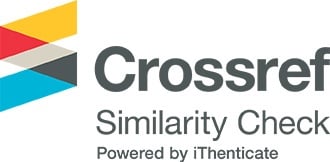ỨNG DỤNG CÔNG NGHỆ THỰC TẾ ẢO TRONG GIÁO DỤC: MỘT NGHIÊN CỨU TRƯỜNG HỢP
Các tác giả
DOI: https://doi.org/10.59294/HIUJS.KHQG.2024.012Từ khóa:
công nghệ, giáo dục, Thực tế ảoTóm tắt
Thực tế ảo là một công nghệ mới rất tiềm năng để ứng dụng trong môi trường giáo dục tại Việt Nam. Đặc biệt trong ngành Logistics và Quản lý chuỗi cung ứng, khi mà việc đi tham quan và trải nghiệm thực tế bị một số hạn chế về an toàn lao động và cản trở công việc thì thực tế ảo là một giải pháp hữu hiệu. Bài báo mô tả thực trạng ứng dụng thực tế ảo trong giảng dạy các môn học liên quan cảng và kho bãi thuộc ngành Logistics và Quản lý chuỗi cung ứng tại Trường Đại học Bình Dương và những khó khăn trong quá trình triển khai giảng dạy thực tế. Bên cạnh đó, sau khi khảo sát hơn 100 sinh viên đã trải nghiệm, kết quả chỉ ra rằng việc học tập bằng công nghệ thực tế ảo giúp sinh viên hứng thú và tiếp thu kiến thức dễ dàng hơn so với việc giảng dạy lý thuyết thông thường. Nghiên cứu là một trường hợp ứng dụng hiệu quả thực tế ảo vào giảng dạy trong đại học. Vì vậy, giúp các cơ sở đào tạo trong cả nước có cái nhìn khách quan về việc sử dụng công nghệ này.
Abstract
Virtual reality is a new technology with great potential for application in education in Vietnam. Especially for Logistics and Supply chain management, when students visit factories or ports, they will face some risks regarding labor safety or hindering product flow. When using virtual reality, these things will be avoided. Therefore, this is considered an effective technology. The article describes the application of virtual reality in teaching subjects related to ports and warehouses in Logistics and Supply chain management at Binh Duong University and the difficulties in implementation. In addition, after surveying more than 100 students, the results showed that learning with virtual reality technology helps students get inspired and absorb knowledge more easily than with the old method. The research is a case study of the effective application of virtual reality in education. Therefore, it helps universities have an objective view on the use of this technology.
Tài liệu tham khảo
[1] Statista Market Insights, “AR & VR - Worldwide | Statista Market Forecast.” Accessed: May 02, 2024. [Online]. Available: https://www.statista.com/outlook/amo/ar-vr/worldwide
[2] S. M. Lavalle, “VIRTUAL REALITY,” 2020. [Online]. Available: http://lavalle.pl/vr/
[3] Q. Song and Y. S. Wook, “Exploration of the application of virtual reality and Internet of things in film and television production mode,” Applied Sciences (Switzerland), vol. 10, no. 10, May 2020, doi: 10.3390/app10103450.
DOI: https://doi.org/10.3390/app10103450[4] J. Du, H. M. Do, and W. Sheng, “Human–Robot Collaborative Control in a Virtual-Reality-Based Telepresence System,” Int J Soc Robot, vol. 13, no. 6, pp. 1295–1306, Sep. 2021, doi: 10.1007/s12369-020-00718-w.
DOI: https://doi.org/10.1007/s12369-020-00718-w[5] A. Paszkiewicz, M. Salach, P. Dymora, M. Bolanowski, G. Budzik, and P. Kubiak, “Methodology of implementing virtual reality in education for industry 4.0,” Sustainability (Switzerland), vol. 13, no. 9, May 2021, doi: 10.3390/su13095049.
DOI: https://doi.org/10.3390/su13095049[6] J. Geng and X. Wu, “Application of Virtual Reality Technology in University Education,” in Journal of Physics: Conference Series, IOP Publishing Ltd, Jul. 2021. doi: 10.1088/1742-6596/1972/1/012023
DOI: https://doi.org/10.1088/1742-6596/1972/1/012023[7] D. Kamińska et al., “Virtual reality and its applications in education: Survey,” Information (Switzerland), vol. 10, no. 10, Oct. 2019, doi: 10.3390/info10100318
DOI: https://doi.org/10.3390/info10100318[8] Y. Ding, Y. Ding, Y. Li, and L. Cheng, “Application of Internet of Things and Virtual Reality Technology in College Physical Education,” IEEE Access, vol. 8, pp. 96065–96074, 2020, doi: 10.1109/ACCESS.2020.2992283.
DOI: https://doi.org/10.1109/ACCESS.2020.2992283[9] E. McGovern, G. Moreira, and C. Luna-Nevarez, “An application of virtual reality in education: Can this technology enhance the quality of students’ learning experience?,” Journal of Education for Business, vol. 95, no. 7, pp. 490–496, Oct. 2020, doi: 10.1080/08832323.2019.1703096
[10] E. McGovern, G. Moreira, and C. Luna-Nevarez, “An application of virtual reality in education: Can this technology enhance the quality of students’ learning experience?,” Journal of Education for Business, vol. 95, no. 7, pp. 490–496, Oct. 2020, doi: 10.1080/08832323.2019.1703096.
DOI: https://doi.org/10.1080/08832323.2019.1703096[11] G. M. & C. L.-N. Enda McGovern, “DEVELOPMENT OF VIRTUAL REALITY TECHNOLOGY IN THE ASPECT OF EDUCATIONAL APPLICATIONS,” 2017, doi: 10.14611/minib.26.12.2017.15.
[12] C. Zheng, M. Yu, Z. Guo, H. Liu, M. Gao, and C. S. Chai, “Review of the application of virtual reality in language education from 2010 to 2020,” Journal of China Computer-Assisted Language Learning, vol. 2, no. 2, pp. 299–335, Jan. 2023, doi: 10.1515/jccall-2022-0014.
DOI: https://doi.org/10.1515/jccall-2022-0014Tải xuống
Tải xuống: 2723











